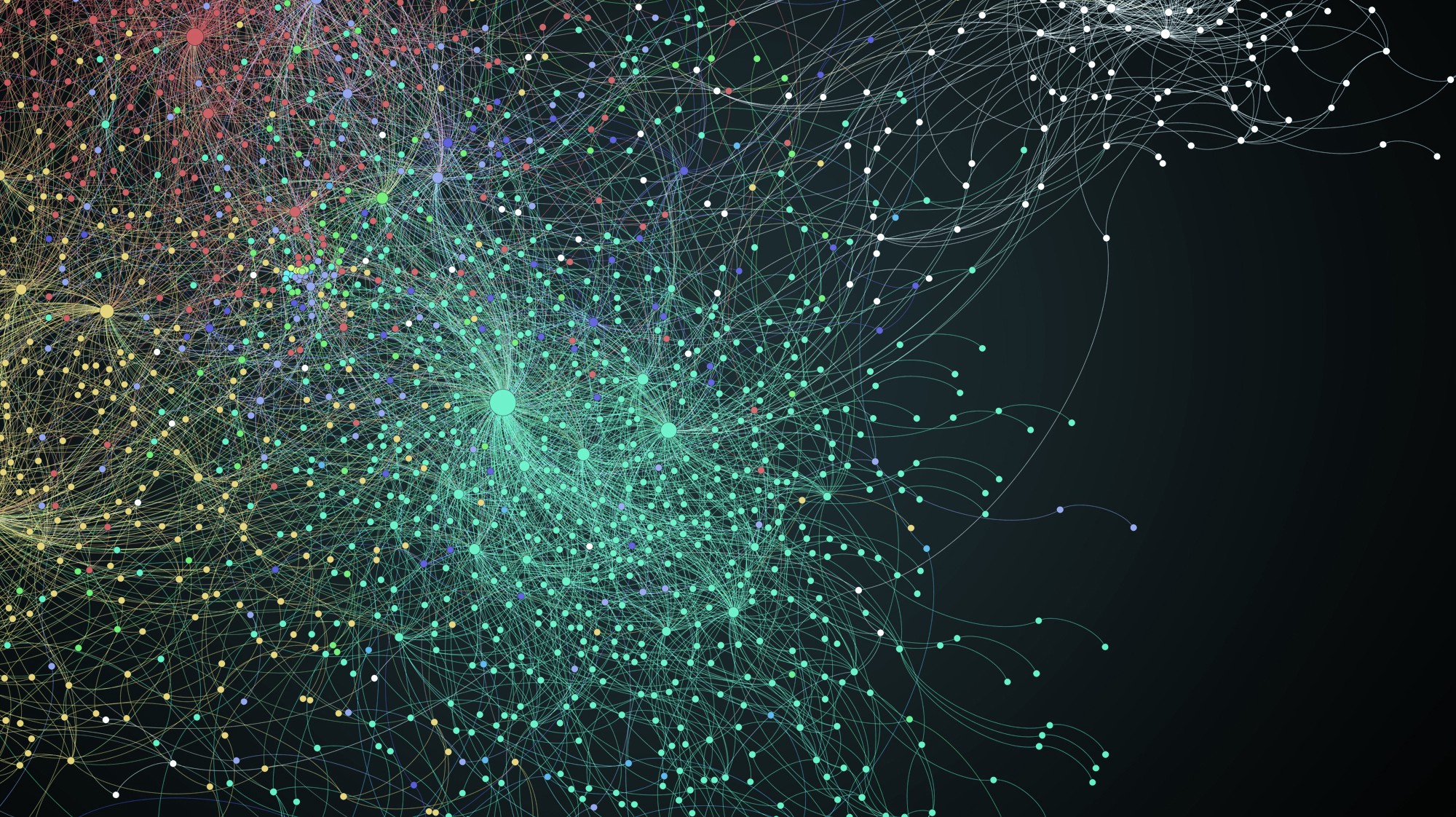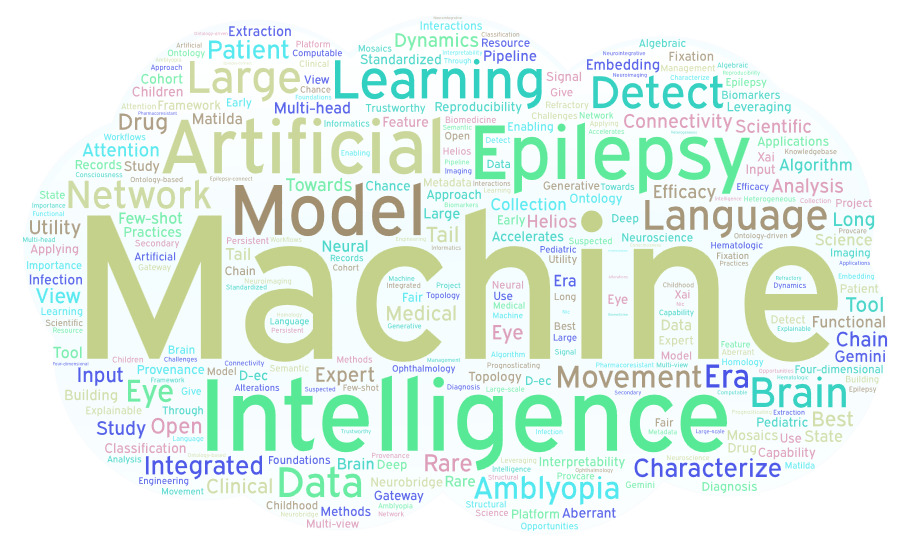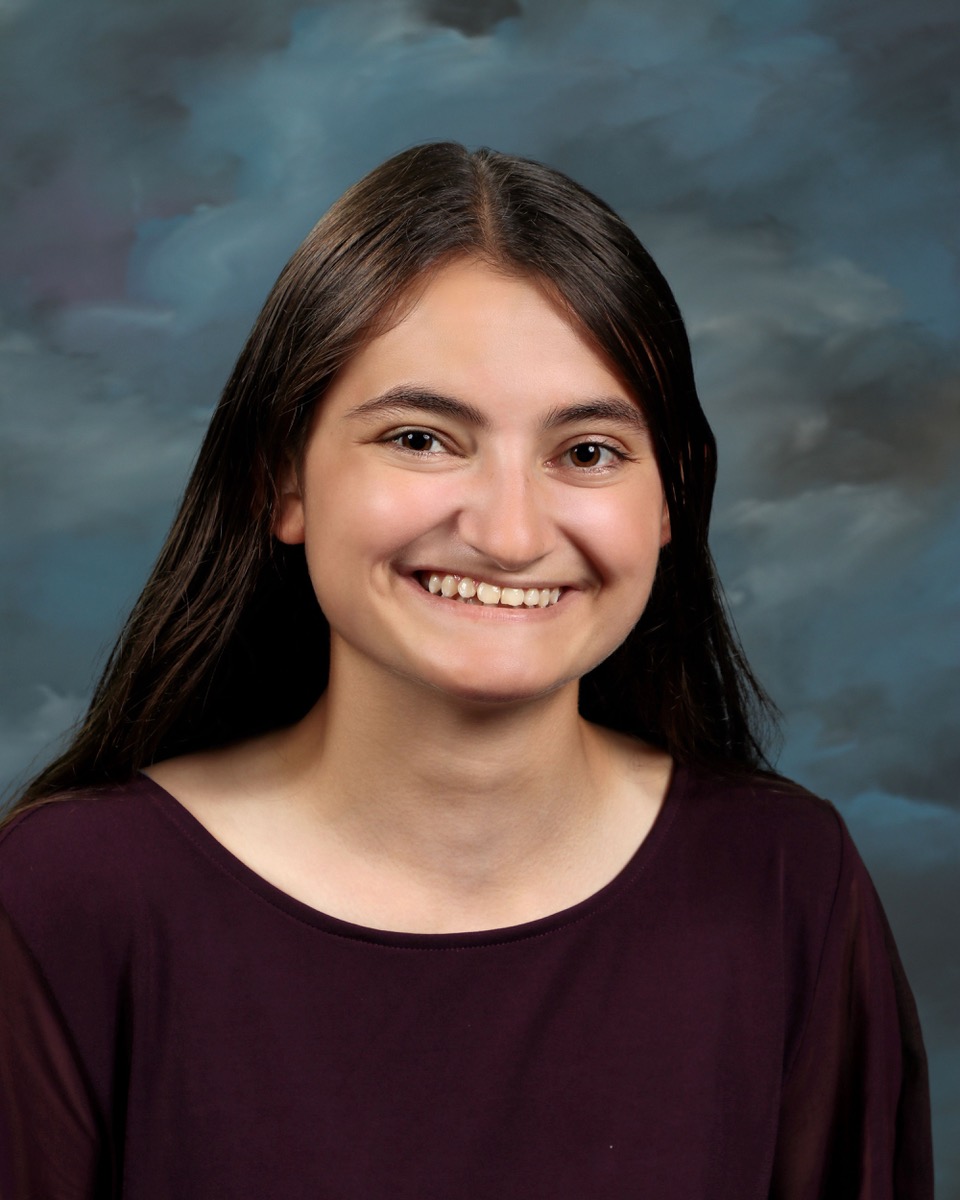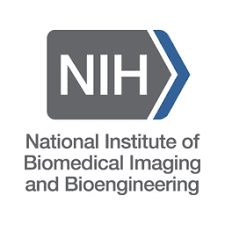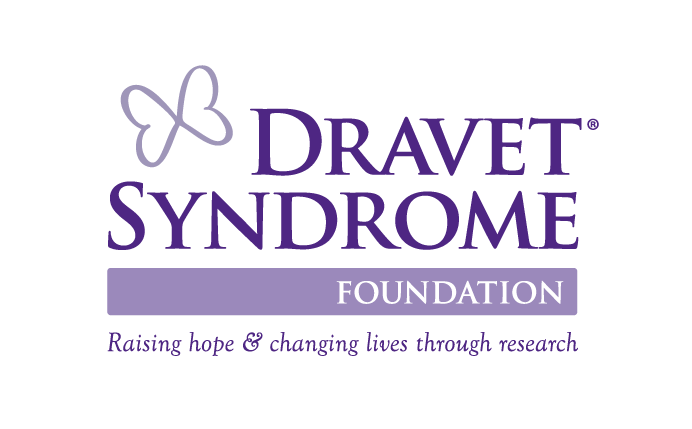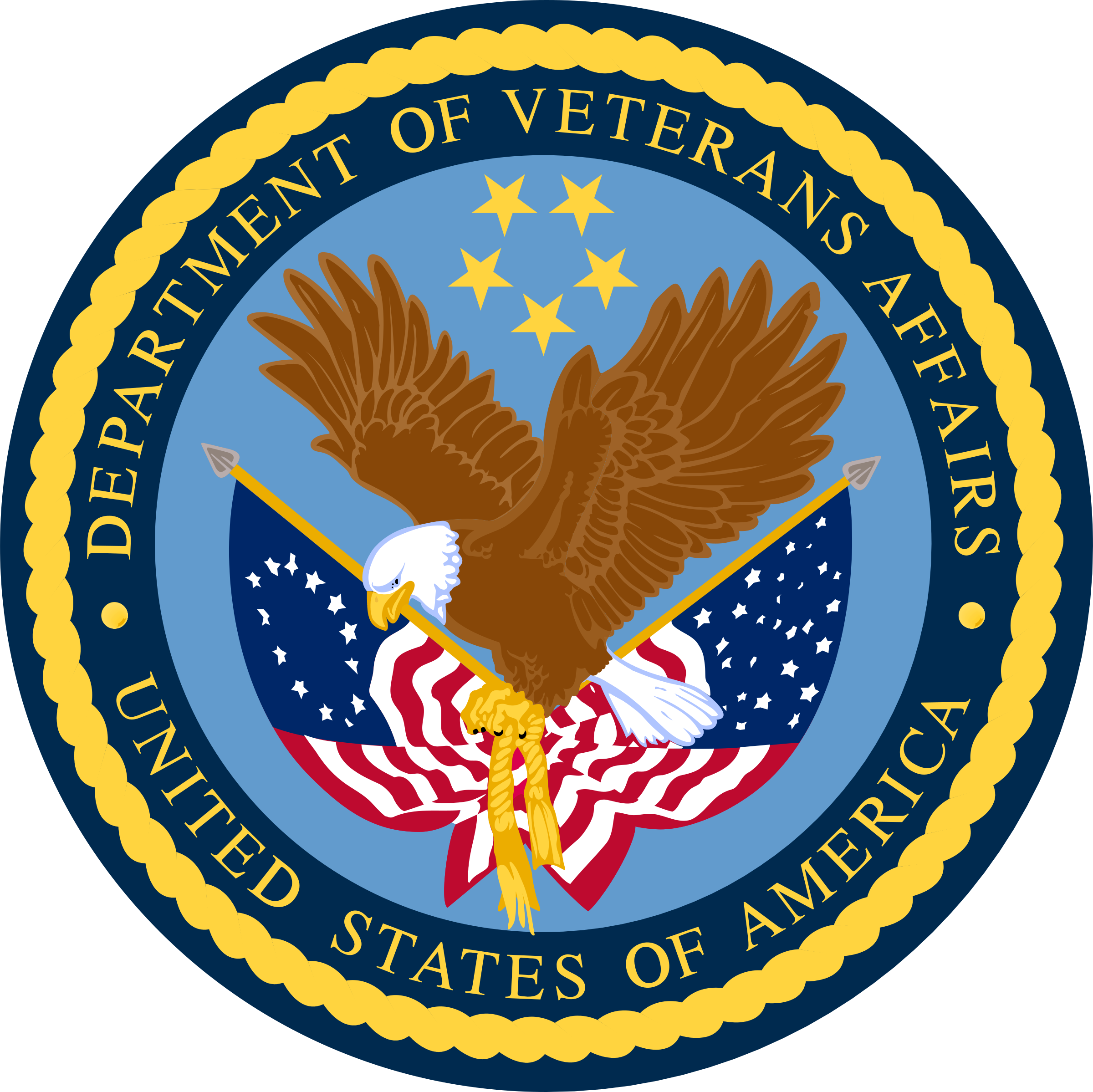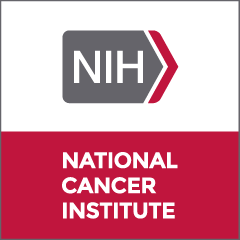Publications
2025
Upadhyaya, D.P., Cakir, G.B., Stefano, R., Shaikh, A., Albert, J., Sahoo S.S.*, and Ghasia, F*., 2025. A Multi-Head Attention Deep Learning Algorithm to Detect Amblyopia using Fixation Eye Movements . Ophthalmology Science 2025, by the American Academy of Ophthalmology. *Co-corresponding author. A Multi-Head Attention Deep Learning Algorithm to Detect Amblyopia using Fixation Eye Movements.
Golnari P, Prantzalos K, Hood V, Meskis MA, Isom LL, Wilcox K, Parent JM, Lal D, Lhatoo SD, Goodkin HP, Wirrell EC, Knupp KG, Patel M, Loeb JA, Sullivan JE, Harte-Hargrove L, Fureman BE, Buchhalter J, Sahoo SS. Ontology accelerates few-shot learning capability of large language model: A study in extraction of drug efficacy in a rare pediatric epilepsy. Int J Med Inform. 2025 Sep;201:105942. doi: 10.1016/j.ijmedinf.2025.105942. Epub 2025 Apr 21. PMID: 40311258.
Golnari, P., Prantzalos, K., Upadhyaya D., Buchhalter, J., Sahoo S.S., Human in the Loop: Embedding Medical Expert Input in Large Language Models for Clinical Applications. MEDINFO 2025. (Accepted)
Prantzalos, K., Golnari, P., Upadhyaya D., Thyagaraj S., Fernandez Baca-Vaca, G., Luders H., Sahoo S.S., Standardized Epilepsy Data Collection and Analysis Leveraging the Four-Dimensional Epilepsy Classification (4D-EC) Framework. MEDINFO 2025. (Accepted)
2024
Upadhyaya, D.P., Tarabichi, Y., Prantzalos, K., Ayub, S., Kaelber, D.C. and Sahoo, S.S., 2024. Machine learning interpretability methods to characterize the importance of hematologic biomarkers in prognosticating patients with suspected infection . Computers in Biology and Medicine, 183, p.109251.
Sivagnanam, S., Yeu, S., Lin, K., Sakai, S., Garzon, F., Yoshimoto, K., Prantzalos, K., Upadhyaya, D.P., Majumdar, A., Sahoo, S.S. and Lytton, W.W., 2024. Towards building a trustworthy pipeline integrating Neuroscience Gateway and Open Science Chain . Database, 2024, p.baae023.
Prantzalos, K., Upadhyaya, D.P., Golnari, P., Fernandez-BacaVaca, G., Aispuro, G.P., Salehizadeh, S., Thyagaraj, S., Gurski, N. & Sahoo, S.S. 2024, Neural mosaics: detecting aberrant brain interactions using algebraic topology and generative artificial intelligence. , AMIA 2024 Annual Symposium, November 9–13, San Francisco, CA, American Medical Informatics Association, (Accepted).
Upadhyaya, D.P., Prantzalos, K., Golnari, P., Shaikh, A.G., Sivagnanam, S., Majumdar, A., Ghasia, F.F. & Sahoo, S.S. 2025, Explainable artificial intelligence (XAI) in the era of large language models: applying an XAI framework in pediatric ophthalmology diagnosis using the Gemini model. AMIA 2025 Informatics Summit, March 10–13, Pittsburgh, PA, American Medical Informatics Association, (Accepted).
Sanchez, E., Upadhyaya, D.P., Cakir, G.B., Shaikh, A., Stefano, R., Sahoo, S. and Ghasia, F., 2024. Machine Learning, Artificial Intelligence and Eye Movements: Utility in Detection of Amblyopia. Investigative Ophthalmology & Visual Science, 65(7), pp.4301-4301.
Sahoo, S.S., Plasek, J.M., Xu, H., Uzuner, Ö., Cohen, T., Yetisgen, M., Liu, H., Meystre, S. and Wang, Y., 2024. Large language models for biomedicine: foundations, opportunities, challenges, and best practices. Journal of the American Medical Informatics Association, p.ocae074.
Upadhyaya, D.P., Shaikh, A.G., Cakir, G.B., Prantzalos, K., Golnari, P., Ghasia, F.F. & Sahoo, S.S. 2024, A 360° view for large language models: Early detection of amblyopia in children using multi-view eye movement recordings. in J. Finkelstein, R. Moskovitch & E. Parimbelli (eds), Artificial intelligence in medicine. AIME 2024. Lecture notes in computer science, vol. 14845, Springer, Cham, pp. 165–175.
Upadhyaya, D.P., Shaikh, A., Prantzalos, K., Golnari, P., Ghasia, F.F. & Sahoo, S.S. 2024, Helios: a platform for early childhood amblyopia detection using fixation eye movements. AMIA 2024 Annual Symposium, November 9–13, San Francisco, CA, American Medical Informatics Association (Poster), (Accepted).
2023
Prantzalos, K., Upadhyaya, D., Shafiabadi, N., Fernandez-BacaVaca, G., Gurski, N., Yoshimoto, K., Sivagnanam, S., Majumdar, A. and Sahoo, S.S., 2023. MaTiLDA: an integrated machine learning and topological data analysis platform for brain network dynamics. In PACIFIC SYMPOSIUM ON BIOCOMPUTING 2024 (pp. 65-80).
Sahoo, S.S., Turner, M.D., Wang, L., Ambite, J.L., Appaji, A., Rajasekar, A., Lander, H.M., Wang, Y. and Turner, J.A., 2023. NeuroBridge ontology: computable provenance metadata to give the long tail of neuroimaging data a FAIR chance for secondary use. Frontiers in Neuroinformatics, 17, p.1216443.
Upadhyaya, D.P., Prantzalos, K., Thyagaraj, S., Shafiabadi, N., Fernandez-BacaVaca, G., Sivagnanam, S., Majumdar, A. and Sahoo, S.S., 2023. Machine Learning Interpretability Methods to Characterize Brain Network Dynamics in Epilepsy. medRxiv.
Wang, X., Wang, Y., Ambite, J.L., Appaji, A., Lander, H., Moore, S.M., Rajasekar, A.K., Turner, J.A., Turner, M.D., Wang, L. and Sahoo, S.S., 2023, April. Enabling scientific reproducibility through FAIR data management: An ontology-driven deep learning approach in the NeuroBridge Project. In AMIA Annual Symposium Proceedings (Vol. 2022, p. 1135).
Wang, L., Ambite, J.L., Appaji, A., Bijsterbosch, J., Dockes, J., Herrick, R., Kogan, A., Lander, H., Marcus, D., Moore, S.M. and Poline, J.B., 2023. NeuroBridge: a prototype platform for discovery of the long-tail neuroimaging data. Frontiers in neuroinformatics, 17, p.1215261.
2022
Wang, X., Wang, Y., Ambite, J.L., Appaji, A., Lander, H., Moore, S.M., Rajasekar, A.K., Turner, J.A., Turner, M.D., Wang, L. and Sahoo, S.S., 2023, April. Enabling scientific reproducibility through FAIR data management: An ontology-driven deep learning approach in the NeuroBridge Project. In AMIA Annual Symposium Proceedings (Vol. 2022, p. 1135).
Spilsbury, J.C., Hernandez, E., Kiley, K., Gillerlane Hinkes, E., Prasanna, S., Shafiabadi, N., Rao, P. and Sahoo, S.S., 2022. Social Service Workers’ Use of Social Media to Obtain Client Information: Current Practices and Perspectives on a Potential Informatics Platform. Journal of social service research, 48(6), pp.739-752.
Sahoo, S.S., Kobow, K., Zhang, J., Buchhalter, J., Dayyani, M., Upadhyaya, D.P., Prantzalos, K., Bhattacharjee, M., Blumcke, I., Wiebe, S. and Lhatoo, S.D., 2022. Ontology-based feature engineering in machine learning workflows for heterogeneous epilepsy patient records. Scientific reports, 12(1), p.19430.
Turner, J.A., Turner, M.D., Appaji, A., Rajasekar, A.K., Wang, L. & Sahoo, S.S. 2022, NeuroBridge ontology development for shared neuroimaging datasets. International Neuroinformatics Coordinating Facility (INCF) Assembly, 2022.
Lander, H., Rajasekar, A., Wang, Y., Watson, M., Sahoo, S., Turner, J., Poline, J-B. & Wang, L. 2022, Linking NeuroBridge and NeuroQuery with deep semantic matching. Neuroinformatics Assembly.
2021
Prantzalos, K., Zhang, J., Shafiabadi, N., Fernandez-BacaVaca, G. and Sahoo, S.S., 2022, February. Epilepsy-Connect: An Integrated Knowledgebase for Characterizing Alterations in Consciousness State of Pharmacoresistant Epilepsy Patients. In AMIA Annual Symposium Proceedings (Vol. 2021, p. 1019).
Gupta, D.K., Marano, M., Aurora, R., Boyd, J. and Sahoo, S.S., 2020. Movement disorders ontology for clinically oriented and clinicians-driven data mining of multi-center cohorts in Parkinson’s disease. medRxiv, pp.2020-11.
Zhang, J., Bauman, R., Shafiabadi, N., Gurski, N., Fernandez-BacaVaca, G. and Sahoo, S.S., 2022, February. Characterizing brain network dynamics using persistent homology in patients with refractory epilepsy. In AMIA Annual Symposium Proceedings (Vol. 2021, p. 1244).
2020
Carr, S.J., Gershon, A., Shafiabadi, N., Lhatoo, S.D., Tatsuoka, C. and Sahoo, S.S., 2021. An integrative approach to study structural and functional network connectivity in epilepsy using imaging and signal data. Frontiers in integrative neuroscience, 14, p.491403.
Lhatoo, S.D., Bernasconi, N., Blumcke, I., Braun, K., Buchhalter, J., Denaxas, S., Galanopoulou, A., Josephson, C., Kobow, K., Lowenstein, D. and Ryvlin, P., 2020. Big data in epilepsy: clinical and research considerations. Report from the Epilepsy Big Data Task Force of the International League Against Epilepsy. Epilepsia, 61(9), pp.1869-1883.
Liu, C., Kim, M., Rueschman, M. and Sahoo, S.S., 2020. ProvCaRe: A Large-Scale Semantic Provenance Resource for Scientific Reproducibility. In Provenance in Data Science: From Data Models to Context-Aware Knowledge Graphs (pp. 59-73). Cham: Springer International Publishing.
Sahoo, S.S., Gershon, A., Nassim, S., Kaushik, G., Curtis, T., Lhatoo, S.D. and Fernandez-BacaVaca, G., 2020. NeuroIntegrative Connectivity (NIC) informatics tool for brain functional connectivity network analysis in cohort studies. In AMIA Annual Symposium Proceedings (Vol. 2020, p. 1090). American Medical Informatics Association.
2019
Sahoo, S.S., Valdez, J., Rueschman, M. and Kim, M., 2019. Semantic Provenance Graph for Reproducibility of Biomedical Research Studies: Generating and Analyzing Graph Structures from Published Literature. In MEDINFO 2019: Health and Wellbeing e-Networks for All (pp. 328-332). IOS Press.
Yang, S., Ghosh, K., Sakaie, K., Sahoo, S.S., Carr, S.J.A. and Tatsuoka, C., 2019. A simplified crossing fiber model in diffusion weighted imaging. Frontiers in neuroscience, 13, p.492.
Hong, X., Liu, C., Momotaz, H., Cassidy, K., Sajatovic, M. and Sahoo, S.S., 2020, March. Enhancing multi-center patient cohort studies in the managing epilepsy well (MEW) network: integrated data integration and statistical analysis. In AMIA Annual Symposium Proceedings (Vol. 2019, p. 1071).
Sahoo, S.S., Valdez, J., Kim, M., Rueschman, M. and Redline, S., 2019. ProvCaRe: characterizing scientific reproducibility of biomedical research studies using semantic provenance metadata. International journal of medical informatics, 121, pp.10-18.
Gershon, A., Devulapalli, P., Zonjy, B., Ghosh, K., Tatsuoka, C. and Sahoo, S.S., 2019. Computing functional brain connectivity in neurological disorders: efficient processing and retrieval of electrophysiological signal data. AMIA Summits on Translational Science Proceedings, 2019, p.107.
Socrates, V., Gershon, A.L. and Sahoo, S.S., 2019, August. Computation of Brain Functional Connectivity Network Measures in Epilepsy: A Web-Based Platform for EEG Signal Data Processing and Analysis. In MedInfo (pp. 1590-1591).
2018
Valdez, J., Kim, M., Rueschman, M., Redline, S. and Sahoo, S.S., 2018. Classification of provenance triples for scientific reproducibility: A comparative evaluation of deep learning models in the ProvCaRe project. In Provenance and Annotation of Data and Processes: 7th International Provenance and Annotation Workshop, IPAW 2018, London, UK, July 9-10, 2018, Proceedings (pp. 30-41). Springer International Publishing.
Gershon, A., Lhatoo, S.D., Tatsuoka, C., Ghosh, K., Loparo, K. and Sahoo, S.S., 2018. Scalable Signal Data Processing for Measuring Functional Connectivity in Epilepsy Neurological Disorder. In Signal Processing and Machine Learning for Biomedical Big Data (pp. 259-269). (Book)CRC Press.
2017
Sajatovic, M., Tatsuoka, C., Welter, E., Friedman, D., Spruill, T.M., Stoll, S., Sahoo, S.S., Bukach, A., Bamps, Y.A., Valdez, J. and Jobst, B.C., 2017. Correlates of quality of life among individuals with epilepsy enrolled in self-management research: from the US Centers for Disease Control and Prevention Managing Epilepsy Well Network. Epilepsy & Behavior, 69, pp.177-180.
Valdez, J., Kim, M., Rueschman, M., Socrates, V., Redline, S. and Sahoo, S.S., 2017. ProvCaRe semantic provenance knowledgebase: evaluating scientific reproducibility of research studies. In AMIA Annual Symposium Proceedings (Vol. 2017, p. 1705). American Medical Informatics Association.
Valdez, J., Rueschman, M., Kim, M., Arabyarmohammadi, S., Redline, S. and Sahoo, S.S., 2017. An extensible ontology modeling approach using post coordinated expressions for semantic provenance in biomedical research. In On the Move to Meaningful Internet Systems. OTM 2017 Conferences: Confederated International Conferences: CoopIS, C&TC, and ODBASE 2017, Rhodes, Greece, October 23-27, 2017, Proceedings, Part II (pp. 337-352). Springer International Publishing.
Gershon, A.L., Zonjy, B., Tatsuoka, C., Ghosh, K. and Sahoo, S.S., 2017. A Flexible Computational Neuroinformatics Workflow for Computing Functional Networks in Epilepsy Neurological Disorder. In AMIA.
2016
Sahoo, S.S., Wei, A., Tatsuoka, C., Ghosh, K. and Lhatoo, S.D., 2016. Processing neurology clinical data for knowledge discovery: scalable data flows using distributed computing. Machine Learning for Health Informatics: State-of-the-Art and Future Challenges, pp.303-318.
Sahoo, S.S., Wei, A., Valdez, J., Wang, L., Zonjy, B., Tatsuoka, C., Loparo, K.A. and Lhatoo, S.D., 2016. NeuroPigPen: a scalable toolkit for processing electrophysiological signal data in neuroscience applications using apache pig. Frontiers in neuroinformatics, 10, p.18.
Dean, D.A., Goldberger, A.L., Mueller, R., Kim, M., Rueschman, M., Mobley, D., Sahoo, S.S., Jayapandian, C.P., Cui, L., Morrical, M.G. and Surovec, S., 2016. Scaling up scientific discovery in sleep medicine: the national sleep research resource. Sleep, 39(5), pp.1151-1164.
Sahoo, S.S., Zhang, G.Q., Bamps, Y., Fraser, R., Stoll, S., Lhatoo, S.D., Tatsuoka, C., Sams, J., Welter, E. and Sajatovic, M., 2016. Managing information well: Toward an ontology-driven informatics platform for data sharing and secondary use in epilepsy self-management research centers. Health informatics journal, 22(3), pp.548-561.
Yang, S., Tatsuoka, C., Ghosh, K., Lacuey-Lecumberri, N., Lhatoo, S.D. and Sahoo, S.S., 2016. Comparative evaluation for brain structural connectivity approaches: towards integrative neuroinformatics tool for epilepsy clinical research. AMIA Summits on Translational Science Proceedings, 2016, p.446.
Sahoo, S.S., Ramesh, P., Welter, E., Bukach, A., Valdez, J., Tatsuoka, C., Bamps, Y., Stoll, S., Jobst, B.C. and Sajatovic, M., 2016. Insight: An ontology-based integrated database and analysis platform for epilepsy self-management research. International journal of medical informatics, 94, pp.21-30.
Valdez, J., Rueschman, M., Kim, M., Redline, S. and Sahoo, S.S., 2016. An ontology-enabled natural language processing pipeline for provenance metadata extraction from biomedical text (short paper). In On the Move to Meaningful Internet Systems: OTM 2016 Conferences: Confederated International Conferences: CoopIS, C&TC, and ODBASE 2016, Rhodes, Greece, October 24-28, 2016, Proceedings (pp. 699-708). Springer International Publishing. An Ontology-Enabled Natural Language Processing Pipeline for Provenance Metadata Extraction from Biomedical Text
Sahoo, S.S., Valdez, J. and Rueschman, M., 2016. Scientific reproducibility in biomedical research: provenance metadata ontology for semantic annotation of study description. In AMIA Annual Symposium Proceedings (Vol. 2016, p. 1070). American Medical Informatics Association.
2015
Jayapandian, C., Wei, A., Ramesh, P., Zonjy, B., Lhatoo, S.D., Loparo, K., Zhang, G.Q. and Sahoo, S.S., 2015. A scalable neuroinformatics data flow for electrophysiological signals using MapReduce. Frontiers in neuroinformatics, 9, p.4.
Ramesh, P., Wei, A., Welter, E., Bamps, Y., Stoll, S., Bukach, A., Sajatovic, M. and Sahoo, S.S., 2015, November. Insight: Semantic provenance and analysis platform for multi-center neurology healthcare research. In 2015 IEEE International Conference on Bioinformatics and Biomedicine (BIBM) (pp. 731-736). IEEE.
LaFrance Jr, W.C., Ranieri, R., Bamps, Y., Stoll, S., Sahoo, S.S., Welter, E., Sams, J., Tatsuoka, C. and Sajatovic, M., 2015. Comparison of common data elements from the Managing Epilepsy Well (MEW) Network integrated database and a well-characterized sample with nonepileptic seizures. Epilepsy & Behavior, 45, pp.136-141.
Sahoo SS, Rueschman M, Valdez J, Hsu W, Lhatoo SD, Redline S. Provenance Analysis over Biomedical Big Data Using PROV: Towards Effective Secondary Data Analysis Across Multiple Studies. NIH Big Data to Knowledge (BD2K) Meeting, Bethesda MD. Nov 12-13, 201 Provenance Analysis over Biomedical Big Data Using PROV: Towards Effective Secondary Data Analysis Across Multiple Studies (Poster)
Sahoo SS, Rao P. Provenance Analysis and RDF Query Processing: W3C PROV for Data Quality and Trust . In the 14th International Semantic Web Conference (ISWC 2015), Bethlehem, PA, 2015. (Tutorial, to appear)
2014
Zhang, G.Q., Cui, L., Lhatoo, S., Schuele, S.U. and Sahoo, S.S., 2014. MEDCIS: multi-modality epilepsy data capture and integration system. In AMIA Annual Symposium Proceedings (Vol. 2014, p. 1248). American Medical Informatics Association.
Sahoo, S.S., Tao, S., Parchman, A., Luo, Z., Cui, L., Mergler, P., Lanese, R., Barnholtz-Sloan, J.S., Meropol, N.J. and Zhang, G.Q., 2014. Trial prospector: matching patients with cancer research studies using an automated and scalable approach. Cancer informatics, 13, pp.CIN-S19454.
Sahoo SS, McIntyre C, Lhatoo SD. A Match Made in Cloud? Meeting the Requirements of the Next Generation Neuroscience Research Using Configurable Cloud Infrastructure . National Science Foundation (NSF) Cloud Workshop, Dec 11-12, 2014
Cui, L., Sahoo, S.S., Lhatoo, S.D., Garg, G., Rai, P., Bozorgi, A. and Zhang, G.Q., 2014. Complex epilepsy phenotype extraction from narrative clinical discharge summaries. Journal of biomedical informatics, 51, pp.272-279.
Jayapandian, C., Chen, C.H., Dabir, A., Lhatoo, S., Zhang, G.Q. and Sahoo, S.S., 2014. Domain ontology as conceptual model for big data management: application in biomedical informatics. In Conceptual Modeling: 33rd International Conference, ER 2014 , Atlanta, GA, USA, October 27-29, 2014. Proceedings 33 (pp. 144-157). Springer International Publishing.
2013
Lebo, T., Sahoo, S., McGuinness, D., Belhajjame, K., Cheney, J., Corsar, D., Garijo, D., Soiland-Reyes, S., Zednik, S. and Zhao, J., 2013. Prov-o: The prov ontology. W3C recommendation, 30.
Sahoo, S.S., Jayapandian, C., Garg, G., Kaffashi, F., Chung, S., Bozorgi, A., Chen, C.H., Loparo, K., Lhatoo, S.D. and Zhang, G.Q., 2014. Heart beats in the cloud: distributed analysis of electrophysiological ‘Big Data’using cloud computing for epilepsy clinical research. Journal of the American Medical Informatics Association, 21(2), pp.263-271.
Sahoo, S.S., Lhatoo, S.D., Gupta, D.K., Cui, L., Zhao, M., Jayapandian, C., Bozorgi, A. and Zhang, G.Q., 2014. Epilepsy and seizure ontology: towards an epilepsy informatics infrastructure for clinical research and patient care. Journal of the American Medical Informatics Association, 21(1), pp.82-89.
Cui, L., Mueller, R., Sahoo, S. and Zhang, G.Q., 2013, September. Querying complex federated clinical data using ontological mapping and subsumption reasoning. In 2013 IEEE International Conference on Healthcare Informatics (pp. 351-360). IEEE.
Parchman AJ, Zhang GQ, Mergler P, Barnholtz-Sloan J, Lanese R, Miller DW, Opper C,Sahoo SS, Tao S, Teagno J, Warfe J, Meropol NJ. Trial prospector: An automated clinical trials eligibility matching program . Proceedings of the American Society of Clinical
Bozorgi, A., Chung, S., Kaffashi, F., Loparo, K.A., Sahoo, S., Zhang, G.Q., Kaiboriboon, K. and Lhatoo, S.D., 2013. Significant postictal hypotension: Expanding the spectrum of seizure‐induced autonomic dysregulation. Epilepsia, 54(9), pp.e127-e130.
Jayapandian, C.P., Chen, C.H., Bozorgi, A., Lhatoo, S.D., Zhang, G.Q. and Sahoo, S.S., 2013. Cloudwave: distributed processing of “Big Data” from electrophysiological recordings for epilepsy clinical research using Hadoop. In AMIA Annual Symposium Proceedings (Vol. 2013, p. 691). American Medical Informatics Association.
Jayapandian, C.P., Chen, C.H., Bozorgi, A., Lhatoo, S.D., Zhang, G.Q. and Sahoo, S.S., 2013. Electrophysiological signal analysis and visualization using cloudwave for epilepsy clinical research. Studies in health technology and informatics, 192, p.817.
Sahoo, S.S., Zhang, G.Q. and Lhatoo, S.D., 2013. Epilepsy informatics and an ontology‐driven infrastructure for large database research and patient care in epilepsy. Epilepsia, 54(8), pp.1335-1341.
Asiaee, A.H., Doshi, P., Minning, T., Sahoo, S., Parikh, P., Sheth, A. and Tarleton, R.L., 2013. From questions to effective answers: On the utility of knowledge-driven querying systems for life sciences data. In Data Integration in the Life Sciences: 9th International Conference, DILS 2013, Montreal, QC, Canada, July 11-12, 2013. Proceedings 9 (pp. 38-45). Springer Berlin Heidelberg.
2012
Parikh, P.P., Zheng, J., Logan-Klumpler, F., Stoeckert, C.J., Louis, C., Topalis, P., Protasio, A.V., Sheth, A.P., Carrington, M., Berriman, M. and Sahoo, S.S., 2012. The Ontology for Parasite Lifecycle (OPL): towards a consistent vocabulary of lifecycle stages in parasitic organisms. Journal of biomedical semantics, 3(1), pp.1-13.
Zhang, G.Q., Luo, L., Ogbuji, C., Joslyn, C., Mejino, J. and Sahoo, S.S., 2012. An analysis of multi-type relational interactions in FMA using graph motifs with disjointness constraints. In AMIA Annual Symposium Proceedings (Vol. 2012, p. 1060). American Medical Informatics Association.
Cui, L., Bozorgi, A., Lhatoo, S.D., Zhang, G.Q. and Sahoo, S.S., 2012. EpiDEA: extracting structured epilepsy and seizure information from patient discharge summaries for cohort identification. In AMIA Annual Symposium Proceedings (Vol. 2012, p. 1191). American Medical Informatics Association.
Parikh, P.P., Minning, T.A., Nguyen, V., Lalithsena, S., Asiaee, A.H., Sahoo, S.S., Doshi, P., Tarleton, R. and Sheth, A.P., 2012. A semantic problem solving environment for integrative parasite research: Identification of intervention targets for Trypanosoma cruzi. PLoS neglected tropical diseases, 6(1), p.e1458.
Sahoo, S.S., Zhao, M., Luo, L., Bozorgi, A., Gupta, D., Lhatoo, S.D. and Zhang, G.Q., 2012. OPIC: ontology-driven patient information capturing system for epilepsy. In AMIA Annual Symposium Proceedings (Vol. 2012, p. 799). American Medical Informatics Association.
Jayapandian, C.P., Zhao, M., Ewing, R.M., Zhang, G.Q. and Sahoo, S.S., 2012. A semantic proteomics dashboard (SemPoD) for data management in translational research. BMC systems biology, 6, pp.1-13.
Zhang, G.Q., Sahoo, S.S. and Lhatoo, S.D., 2012. From classification to epilepsy ontology and informatics. Epilepsia, 53, pp.28-32.
Jayapandian, C.P., Zhao, M., Ewing, R.M., Zhang, G.Q. and Sahoo, S.S., 2012. A semantic proteomics dashboard (SemPoD) for data management in translational research. BMC systems biology, 6, pp.1-13.
Teagno, J., Kiefer, R.C., Pathak, J., Zhang, G.Q. and Sahoo, S.S., 2012. A Distributed Semantic Web Approach for Cohort Identification. In AMIA.
2011
Sahoo, S.S., Ogbuji, C., Luo, L., Dong, X., Cui, L., Redline, S.S. and Zhang, G.Q., 2011. Midas: automatic extraction of a common domain of discourse in sleep medicine for multi-center data integration. In AMIA Annual Symposium Proceedings (Vol. 2011, p. 1196). American Medical Informatics Association.
Zhang GQ, Mueller R, Jonhson N, Arabandi S, Sahoo SS, Redline S. Online Exploration of Case-control Study Designs in VISAGE . AMIA Clinical Research Informatics Summit (CRI), 2011.
Sahoo, S.S., Nguyen, V., Bodenreider, O., Parikh, P., Minning, T. and Sheth, A.P., 2011. A unified framework for managing provenance information in translational research . BMC bioinformatics, 12(1), pp.1-18.
Zhao, J., Sahoo, S.S., Missier, P., Sheth, A. and Goble, C., 2010. Extending semantic provenance into the web of data. IEEE Internet Computing, 15(1), pp.40-48.
Sahoo, S.S., 2011. Towards Desiderata for Provenance Ontologies in Biomedicine . In ICBO.
Mueller R, Sahoo SS, Dong X, Redline S, Arabandi S, Luo L, Zhang GQ. Mapping multi-institution data sources to domain ontology for data federation: the PhysioMIMI approach . AMIA Clinical Research Informatics Summit (CRI), 2011.
2010
Sahoo SS, Bodenreider O, Hitzler P, Sheth AP, Thirunarayan K. Provenance Context Entity (PaCE): Scalable provenance tracking for scientific RDF data . The 22nd International Conference on Scientific and Statistical Database Management (SSDBM), 2010. pp. 46
Barga R, Simmhan Y, Chinthaka-Withana E, Sahoo SS, Jackson J, Araujo N. Provenance for Scientific Workflows Towards Reproducible Research . IEEE Data Engineering Bulletin, 2010. Vol. 33(3). pp. 50-58.
Missier P,Sahoo SS, Zhao J, Goble C, Sheth A. Janus: from workflows to semantic provenance and linked open data . The 3rd International Provenance and Annotation Workshop (IPAW), Lecture Notes in Computer Science, Vol. 6378/2010, 2010. pp. 129-141.
Deus H, Zhao J, Sahoo SS, Samwald M, Prud’hommeaux E, Miller M, Marshall MS, Cheung K. Provenance of Microarray Experiments for a Better Understanding of Experiment Results . The 2nd International Workshop on Role of Semantic Web in Provenance Management (
Patni H, Sahoo SS, Henson C, Sheth A. Provenance Aware Linked Sensor Data , The 2nd International Workshop on Trust and Privacy on the Social and Semantic Web, co-located with ESWC, 2010.
Sahoo SS, Groth P, Hartig O, Miles S, Coppens S, Myers J, Gil Y, Moreau L, Zhao J, Panzer M, Garijo D. Provenance Vocabulary Mappings . W3C Provenance Incubator Group Report, 2010.
2009
Sahoo SS, Weatherly DB, Mutharaju R, Anantharam P, Sheth AP, Tarleton RL. Ontology-driven Provenance Management in eScience: an Application in Parasite Research . The 8th International Conference on Ontologies, DataBases, and Applications of Semantics, (OD
Sahoo SS, Sheth A. Provenir ontology: Towards a Framework for eScience Provenance Management. Microsoft eScience Workshop, 2009. http://cci.case.edu/cci/images/7/7a/Framework_for_eScience_Provenance_Management_CR.pdf
Sahoo SS, Halb W, Hellmann S, Idehen K, Thibodeau Jr. T, Auer S, Sequeda J, Ezzat A. A Survey of Current Approaches for Mapping of Relational Databases to RDF . W3C RDB2RDF Incubator Group Report, 2009. http://cci.case.edu/cci/images/0/04/RDB2RDF_SurveyRep
2008
Valerio MD, Sahoo SS, Barga RS, Jackson JJ. Capturing Workflow Event Data for Monitoring, Performance Analysis, and Management of Scientific Workflows . SWBES08, co-located with the 4th IEEE International Conference on eScience, 2008. pp. 626-33. http://cc
Sahoo SS, Sheth AP, Henson C. Semantic Provenance for eScience: ‘Meaningful’ Metadata to Manage the Deluge of Scientific Data. IEEE Internet Computing, Web-Scale Workflow Track, M.B. Blake and M. Huhns (Eds.) , 2008. Vol. 12(4). pp.46-54. (Featured in Asso
Sahoo SS, Bodenreider O, Rutter JL, Skinner KJ, Sheth AP. An ontology-driven semantic mash-up of gene and biological pathway information: Application to the domain of nicotine dependence . Journal of Biomedical Informatics (Special Issue: Semantic Mashup o
Sheth A, Henson C,Sahoo SS. Semantic Sensor Web . IEEE Internet Computing, 2008. Vol. 12(4). pp. 78-83. http://cci.case.edu/cci/images/2/2a/SHS08-IC-Column-SSW.pdf
2007
Sahoo, S.S., Zeng, K., Bodenreider, O. and Sheth, A., 2007. From “glycosyltransferase” to “congenital muscular dystrophy”: Integrating knowledge from NCBI Entrez Gene and the Gene Ontology. Studies in health technology and informatics, 129(Pt 2), p.1260.
Sahoo, S.S., 2007. Integrating gene and pathway information about nicotine dependence. Communications (NLM/NIH).
Sahoo, S.S., Sheth, A., Hunter, B. and York, W.S., 2007. SemBOWSER-Semantic Biological Web Services Registry. Semantic Web: Revolutionizing Knowledge Discovery in the Life Sciences, pp.317-340.
Sahoo, S.S., Bodenreider, O., Zeng, K. and Sheth, A.P., 2007. An experiment in integrating large biomedical knowledge resources with RDF: Application to associating genotype and phenotype information.
2006
Sahoo, S.S., Converting biological information to the W3C Resource Description Framework (RDF): Experience with Entrez Gene Report Lister Hill National Center for Biomedical.
Sahoo, S.S. and Sheth, A., 2006. Bioinformatics applications of Web Services, Web Processes and role of Semantics. In Semantic Web Services, Processes and Applications (pp. 305-322). Boston, MA: Springer US.
Sahoo, S.S., Thomas, C., Sheth, A., York, W.S. and Tartir, S., 2006, May. Knowledge modeling and its application in life sciences: a tale of two ontologies. In Proceedings of the 15th international conference on World Wide Web (pp. 317-326).
Sahoo, S.S., Thomas, C., Sheth, A., York, W.S. and Tartir, S., 2006, May. Knowledge modeling and its application in life sciences: a tale of two ontologies. In Proceedings of the 15th international conference on World Wide Web (pp. 317-326).
Sahoo, S.S., Bodenreider, O., Zeng, K. and Sheth, A.P., 2006. Adapting resources to the semantic web: experience with Entrez Gene. In Workshop on semantic web health care & life sciences at ISWC.
2005
Alvarez-Manilla, G., Atwood III, J., Guo, Y., Warren, N.L., Orlando, R. and Pierce, M., 2006. Tools for glycoproteomic analysis: size exclusion chromatography facilitates identification of tryptic glycopeptides with N-linked glycosylation sites. Journal of proteome research, 5(3), pp.701-708.
Boanerges, A.M., Christian, H.W., Satya, S.S., Amit, S.I. and Budak, A., 2005. Template based semantic similarity for security applications . Technical Reqport, LSDIS Lab, Computer Science Department.
Sahoo, S.S., Sheth, A.P., York, W.S. and Miller, J.A., 2005, May. Semantic Web Services for N-glycosylation Process. In International Symposium on Web Services for Computational Biology and Bioinformatics, VBI, Blacksburg, VA.
Atwood III, J.A., Sahoo, S.S., Alvarez‐Manilla, G., Weatherly, D.B., Kolli, K., Orlando, R. and York, W.S., 2005. Simple modification of a protein database for mass spectral identification of N‐linked glycopeptides. Rapid Communications in Mass Spectrometry: An International Journal Devoted to the Rapid Dissemination of Up‐to‐the‐Minute Research in Mass Spectrometry, 19(21), pp.3002-3006.
Sahoo, S.S., Thomas, C., Sheth, A., Henson, C. and York, W.S., 2005. GLYDE—an expressive XML standard for the representation of glycan structure. Carbohydrate research, 340(18), pp.2802-2807.
2004
Sheth, A.P., York, W.S., Thomas, C., Nagarajan, M., Miller, J.A., Kochut, K., Sahoo, S.S. and Yi, X., 2004. Semantic Web technology in support of Bioinformatics for Glycan Expression.
York, W.S., Sheth, A., Kochut, K., Miller, J.A., Thomas, C., Gomadam, K., Yi, X., Sahoo, S. and Nagarajan, M., 2004. Semantic Integration of Glycomics Data and Information. In Proceedings of the Human Disease Glycomics/Proteome Initiative 1st Workshop (pp. 1-1).
